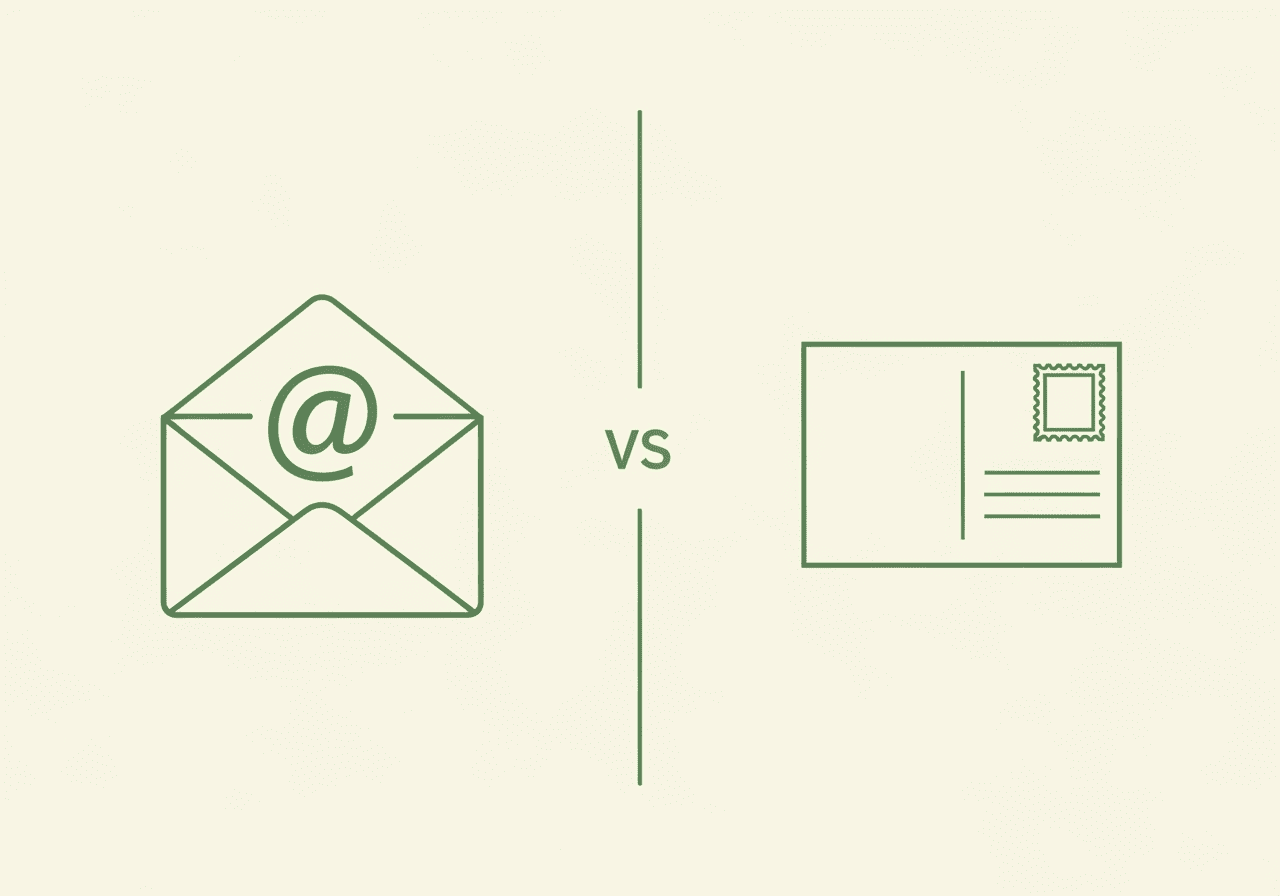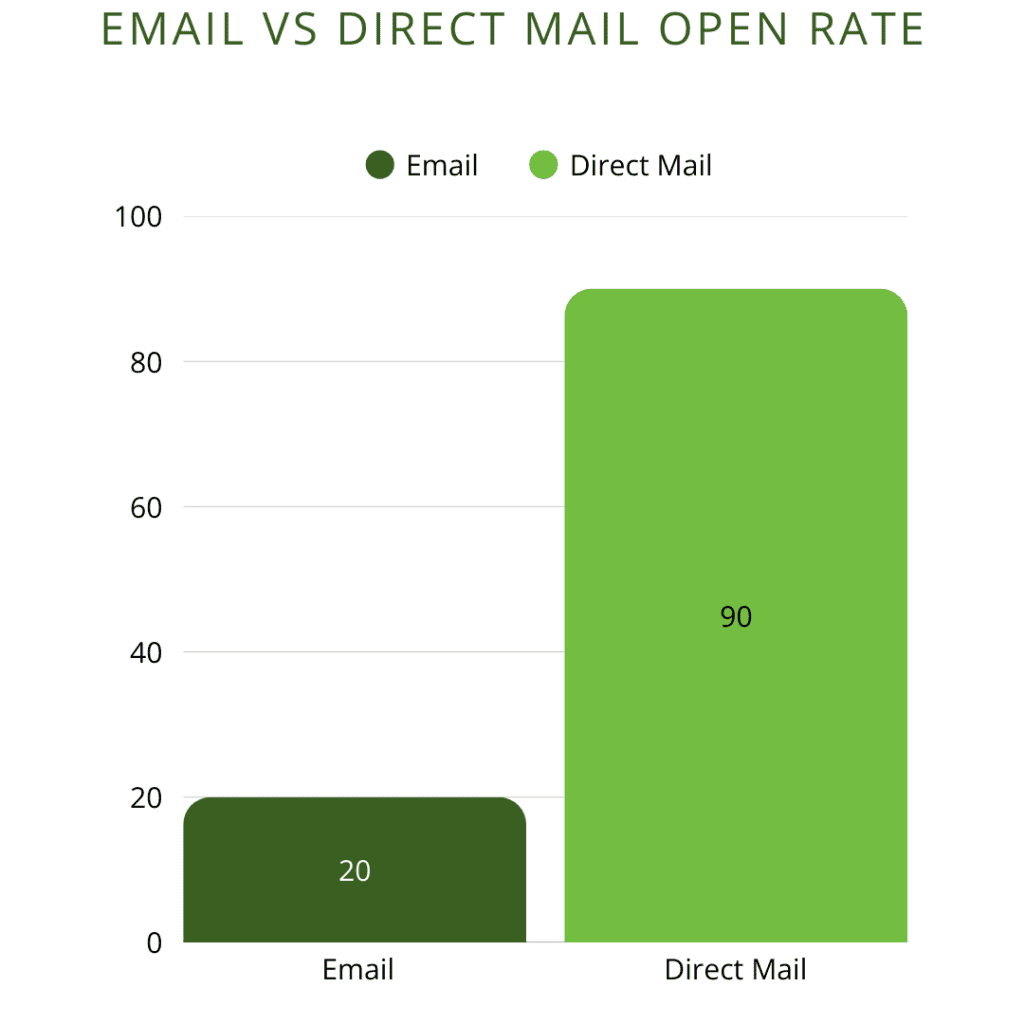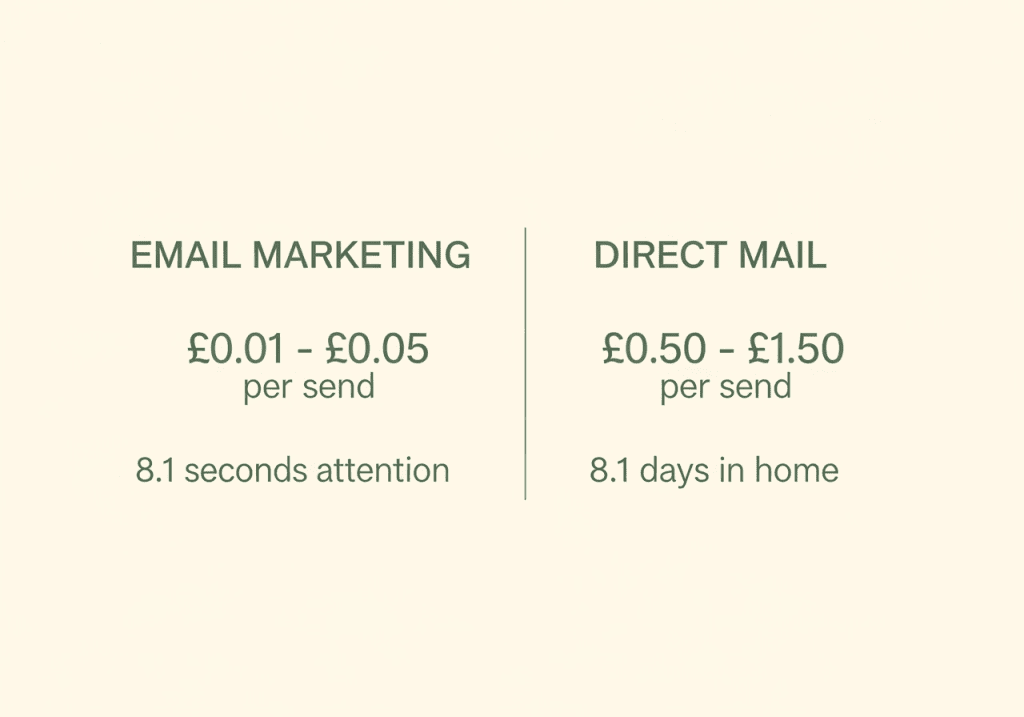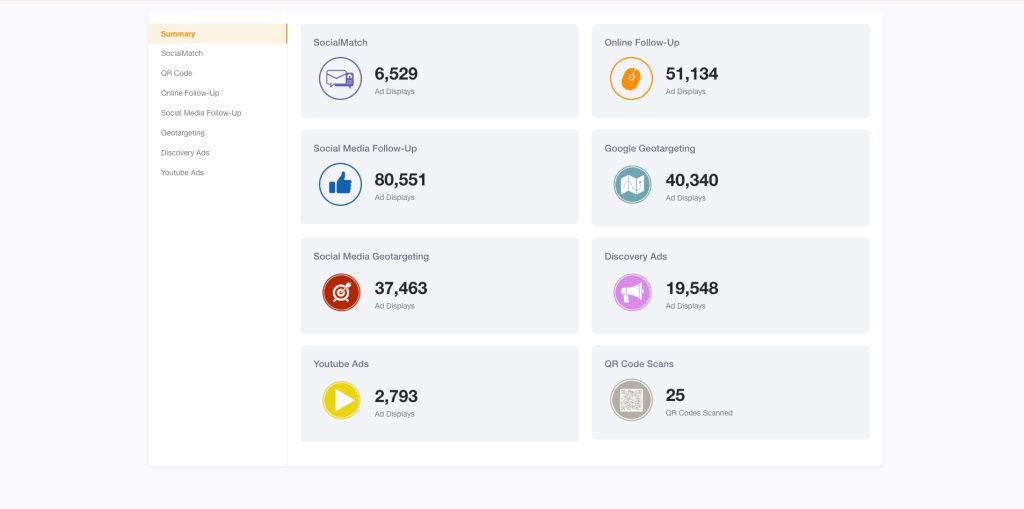
In the digital age, email marketing has been the golden child for marketers everywhere. But here’s a bold truth: direct mail isn’t dead, in fact, it might just be making a powerful comeback. With inboxes overflowing and attention spans shrinking, businesses are beginning to ask: Does traditional mail now have an edge over digital outreach?
In this post, we’ll break down the real differences between direct mail and email marketing, backed by stats, case studies, and real-world insight. Whether you’re in B2B, e-commerce, or a local UK business, this article will help you decide which channel deserves more of your budget, and your attention.

The Open Rates: Inbox vs. Letterbox
Let’s get right into the numbers.
Email Open Rates in the UK: Average at 18–22% depending on industry. Source: Mailchimp
Direct Mail Open Rates: A stunning 70–90%, especially among older demographics. Source: Royal Mail MarketReach
While emails are quick and easy to send, they often end up ignored, spammed, or auto-filtered. Direct mail, on the other hand, physically reaches the recipient, meaning more people actually see it.
Key takeaway: Direct mail grabs more initial attention, but email wins on convenience and scalability.

Cost & ROI: Which Is More Budget-Friendly?
Email: Low cost per send, high scalability. Perfect for newsletters, automated drip campaigns, and ecommerce.
Direct Mail: Higher upfront cost (design, printing, postage) but a longer shelf-life. Flyers and brochures often stick around in homes or offices for days or even weeks.
A 2024 UK case study by JICMAIL found that direct mail stays in the home for an average of 8.1 days, versus the 8.1 seconds of average email attention.
Pro tip: If you’re targeting a high-value audience or want to stand out in a saturated digital space, direct mail may offer stronger long-term ROI.

Personalisation & Trust
Modern email marketing platforms like Klaviyo and Mailchimp offer extensive personalisation features—but consumers are getting wise to it.
Compare this to a well-designed, personalised postcard or a hand-addressed envelope that lands on your doormat. According to Royal Mail, 87% of people consider mail to be believable, while only 48% say the same for email.
Direct mail feels more tangible, personal, and trustworthy.
Speed & Flexibility
If you’re looking for fast results, email wins hands down. You can:
Build a campaign in a day
Segment and automate your lists
A/B test in real-time
Get immediate metrics (open rates, CTR, conversions)
Direct mail takes more planning, but it can also create lasting impressions that email simply can’t replicate.

SEO Connection: How Does This Help Your UK SEO Strategy?
Now here’s the interesting bit, direct mail can actually boost your SEO, indirectly.
When you send physical mail with:
QR codes
Custom landing page URLs
Exclusive online offers
…you create offline-to-online engagement. This drives branded search traffic, direct visits, and potentially higher engagement metrics, all of which signal quality to Google’s algorithm.
Likewise, email marketing campaigns with blog content links can help build organic traffic and improve user retention, another tick in the SEO win column.
Conclusion: So, Which Wins. Direct Mail or Email?
In 2025, email is still the king of speed and scalability, but direct mail is the comeback kid, offering trust, attention, and better long-term brand recall.
For the best results? Don’t choose just one.
The most successful UK marketers use both in harmony, automated email follow-ups after a direct mail drop, QR codes that lead to high-converting landing pages, and cross-channel tracking to measure it all.
What about you? Have you had better results with direct mail or email?
Leave a comment and let us know what’s worked best for your business!
